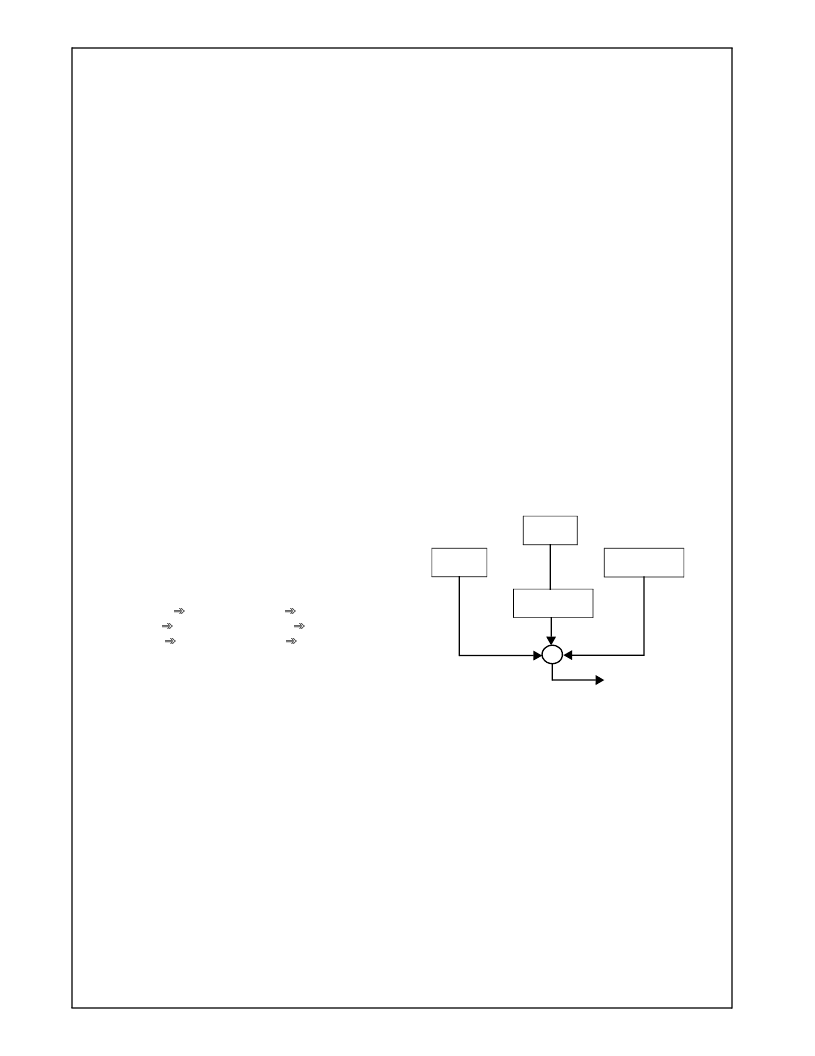- 您現(xiàn)在的位置:買賣IC網(wǎng) > PDF目錄358620 > 30046-23 (NATIONAL SEMICONDUCTOR CORP) Low Power Integrated x86-Compatible 32-Bit Geode GXLV Processor(低功耗集成兼容X86的32位 Geode GXLV技術(shù)處理器) PDF資料下載
參數(shù)資料
| 型號(hào): | 30046-23 |
| 廠商: | NATIONAL SEMICONDUCTOR CORP |
| 元件分類: | 微控制器/微處理器 |
| 英文描述: | Low Power Integrated x86-Compatible 32-Bit Geode GXLV Processor(低功耗集成兼容X86的32位 Geode GXLV技術(shù)處理器) |
| 中文描述: | 32-BIT, 200 MHz, MICROPROCESSOR, CPGA320 |
| 封裝: | SPGA-320 |
| 文件頁數(shù): | 64/247頁 |
| 文件大小: | 4379K |
| 代理商: | 30046-23 |
第1頁第2頁第3頁第4頁第5頁第6頁第7頁第8頁第9頁第10頁第11頁第12頁第13頁第14頁第15頁第16頁第17頁第18頁第19頁第20頁第21頁第22頁第23頁第24頁第25頁第26頁第27頁第28頁第29頁第30頁第31頁第32頁第33頁第34頁第35頁第36頁第37頁第38頁第39頁第40頁第41頁第42頁第43頁第44頁第45頁第46頁第47頁第48頁第49頁第50頁第51頁第52頁第53頁第54頁第55頁第56頁第57頁第58頁第59頁第60頁第61頁第62頁第63頁當(dāng)前第64頁第65頁第66頁第67頁第68頁第69頁第70頁第71頁第72頁第73頁第74頁第75頁第76頁第77頁第78頁第79頁第80頁第81頁第82頁第83頁第84頁第85頁第86頁第87頁第88頁第89頁第90頁第91頁第92頁第93頁第94頁第95頁第96頁第97頁第98頁第99頁第100頁第101頁第102頁第103頁第104頁第105頁第106頁第107頁第108頁第109頁第110頁第111頁第112頁第113頁第114頁第115頁第116頁第117頁第118頁第119頁第120頁第121頁第122頁第123頁第124頁第125頁第126頁第127頁第128頁第129頁第130頁第131頁第132頁第133頁第134頁第135頁第136頁第137頁第138頁第139頁第140頁第141頁第142頁第143頁第144頁第145頁第146頁第147頁第148頁第149頁第150頁第151頁第152頁第153頁第154頁第155頁第156頁第157頁第158頁第159頁第160頁第161頁第162頁第163頁第164頁第165頁第166頁第167頁第168頁第169頁第170頁第171頁第172頁第173頁第174頁第175頁第176頁第177頁第178頁第179頁第180頁第181頁第182頁第183頁第184頁第185頁第186頁第187頁第188頁第189頁第190頁第191頁第192頁第193頁第194頁第195頁第196頁第197頁第198頁第199頁第200頁第201頁第202頁第203頁第204頁第205頁第206頁第207頁第208頁第209頁第210頁第211頁第212頁第213頁第214頁第215頁第216頁第217頁第218頁第219頁第220頁第221頁第222頁第223頁第224頁第225頁第226頁第227頁第228頁第229頁第230頁第231頁第232頁第233頁第234頁第235頁第236頁第237頁第238頁第239頁第240頁第241頁第242頁第243頁第244頁第245頁第246頁第247頁

www.national.com
64
Revision 1.2
Processor Programming (
Continued
)
G
3.4.2
The processor directly addresses up to 4 GB of physical
memory even though the memory controller addresses
only 256 MB of DRAM. Memory address space is
accessed as BYTES, WORDS (16 bits) or DWORDs (32
bits). WORDS and DWORDs are stored in consecutive
memory bytes with the low-order byte located in the low-
est address. The physical address of a WORD or DWORD
is the byte address of the low-order byte.
Memory Address Space
The processor allows memory to be addressed using nine
different addressing modes. These addressing modes are
used to calculate an offset address, often referred to as an
effective address. Depending on the operating mode of
the CPU, the offset is then combined, using memory man-
agement mechanisms, into a physical address that is
applied to the physical memory devices.
Memory management mechanisms consist of segmenta-
tion and paging. Segmentation allows each program to
use several independent, protected address spaces. Pag-
ing translates a logical address into a physical address
using translation lookup tables. Virtual memory is often
implemented using paging. Either or both of these mecha-
nisms can be used for management of the GXLV proces-
sor memory address space.
3.5
OFFSET, SEGMENT, AND PAGING
MECHANISMS
The mapping of address space into a sequence of mem-
ory locations (often cached) is performed by the offset,
segment, and paging mechanisms.
In general, the offset, segment and paging mechanisms
work in tandem as shown below:
instruction offset
offset address
linear address
offset mechanism
segment mechanism
paging mechanism
offset address
linear address
physical page.
As will be explained, the actual operations depend on sev-
eral factors such as the current operating mode and if
paging is enabled.
Note:
The paging mechanism uses part of the linear
address as an offset on the physical page.
3.5.1
In all operating modes, the offset mechanism computes
an offset (effective) address by adding together up to
three values: a base, an index and a displacement. The
base, if present, is the value in one of eight general regis-
ters at the time of the execution of the instruction. The
index, like the base, is a value that is contained in one of
the general registers (except the ESP register) when the
instruction is executed. The index differs from the base in
that the index is first multiplied by a scale factor of 1, 2, 4
or 8 before the summation is made. The third component
added to the memory address calculation is the displace-
ment that is a value supplied as part of the instruction.
Figure 3-3 illustrates the calculation of the offset address.
Offset Mechanism
Nine valid combinations of the base, index, scale factor
and displacement can be used with the CPU instruction
set. These combinations are listed in Table 3-19. The
base and index both refer to contents of a register as indi-
cated by [Base] and [Index].
In real mode operation, the CPU only addresses the low-
est 1 MB of memory and the offset contains 16-bits. In
protected mode the offset contains 32 bits. Initialization
and transition to protected mode is described in Section
3.9.4
“
Initialization and Transition to Protected Mode
”
on
page 93.
Figure 3-3. Offset Address Calculation
Index
Base
Displacement
Scaling
x1, x2, x4, x8
Offset Address
(Effective Address)
+
相關(guān)PDF資料 |
PDF描述 |
|---|---|
| 300471U | Radial, -55dotc, long life wsitching-power |
| 300CNQ | SCHOTTKY RECTIFIER |
| 300CNQ035 | SCHOTTKY RECTIFIER |
| 300CNQ040 | SCHOTTKY RECTIFIER |
| 300CNQ045 | SCHOTTKY RECTIFIER |
相關(guān)代理商/技術(shù)參數(shù) |
參數(shù)描述 |
|---|---|
| 30046-46L | 制造商:LENOX 功能描述:HOLE SAW BI-METAL 73MM |
| 300-466A | 制造商:LG Corporation 功能描述:CABINET ASSYCMT-9325 |
| 300-466B | 制造商:LG Corporation 功能描述:CABINET ASSYCMT-9324 |
| 300-466K | 制造商:LG Corporation 功能描述:CABINET ASSYCMT-9322 |
| 300-466R | 制造商:LG Corporation 功能描述:FRONT CABINET |
發(fā)布緊急采購(gòu),3分鐘左右您將得到回復(fù)。